Research Article Open Access
Bioremediation of a Crude Oil Polluted Soil with Pleurotus Pulmonarius and Glomus Mosseae Using Amaranthus Hybridus as a Test Plant
| Salami Abiodun Olusola1* and Elum, Ejiro Anslem2 | |
| 1Department of Crop Production and Protection, Faculty of Agriculture, Obafemi Awolowo University, Ile-Ife, Nigeria | |
| 2Institute of Ecology and Environmental Studies, Obafemi Awolowo University, Ile-Ife, Nigeria | |
| Corresponding Author : | Salami Abiodun Olusola Department of Crop Production and Protection Faculty of Agriculture, Obafemi Awolowo University Ile-Ife, Nigeria E-mail: sola1salami@yahoo.com |
| Received September 08, 2010; Accepted November 26, 2010; Published November 28, 2010 | |
| Citation: Olusola SA, Anslem EE (2010) Bioremediation of a Crude Oil Polluted Soil with Pleurotus Pulmonarius and Glomus Mosseae Using Amaranthus Hybridus as a Test Plant. J Bioremed Biodegrad 1:113. doi: 10.4172/2155-6199.1000113 | |
| Copyright: © 2010 Olusola SA, et al. This is an open-access article distributed under the terms of the Creative Commons Attribution License, which permits unrestricted use, distribution, and reproduction in any medium, provided the original author and source are credited. | |
Related article at Pubmed Pubmed  Scholar Google Scholar Google |
|
Visit for more related articles at Journal of Bioremediation & Biodegradation
Abstract
Fallouts from crude oil pollution of soils are known to have undesirable effects on plant growth. This research attempts to study the growth of Amaranthus hybridus grown on a crude oil polluted soil bioremediated with Pleurotus pulmonarius (a white rot fungus) and Glomus mosseae (a mycorrhizal fungus). Nine different treatment factors were used while three replicates were used for each treatment in randomized Complete Block Design at the same age of the seedlings. These treatment factors include: sterilized and unsterilized soil, crude oil, mycorrhiza, mycelium of the mushroom and its spent mushroom compost. Amaranthus hybridus was cultivated in the nursery for 3 weeks by broadcasting. The seedlings were later transplanted to experimental pots of 12cm depth, containing 1000g of soil. Seedlings were left to establish properly for a week before the soil in the experimental pots were polluted with crude oil (bonny light) in 0%, 2%, 3%, 4% concentrations. These were allowed to grow for six weeks before the experiment was terminated. Data from greenhouse experiment comprising of A. hybridus grown in pots replicated thrice in both sterilized and unsterilized soils were obtained from seedlings of 9-week old A. hybridus . Plants grown on crude oil polluted unsterilized soils died within 2 weeks after pollution. The control, sterilized and unsterilized soil showed better growth when compared with the rest treatments. Growth was better in crude oil polluted soil inoculated with mycorrhiza ( Glomus mosseae ) followed by mycelium of the mushroom in both sterilized and unsterilized soil respectively. It was observed that treatment with spent mushroom compost at high % concentration of crude oil grew better than low crude oil concentration. Regression analysis revealed that percent Total Carbon (TC) decreased in crude oil polluted soils treated with mycelium of P. pulmonarius and spent mushroom compost of P. pulmonarius . Phosphorus level was found to increase in crude oil polluted samples treated with the mycorrhizal fungus eight weeks after inoculation. Duncan’s Multiple Range Test was carried out for comparison of the mean values of plant height, number of leaves and leaf area at the different crude oil concentrations. This study shows that the use of biological and supporting physical treatments to treat contaminated soil and groundwater is effective for improved land use for vegetation and plant health, yield and growth.
| Introduction |
| Bioremediation of areas degraded by pollutants or otherwise impacted through mismanagement of ecosystem is a form of biotechnological approach aimed at rehabilitating the area for positive uses. Most of the restoration of Polycyclic Aromatic Hydrocarbons (PAH) contaminated sites depends on the activities of bacteria (microbial biodegradation) like Pseudomonas aeruginosa, or use of plants (Phytoremediation) or by the use of fungi (Mycoremediation). Crude oil contains significantly high amount of Polycyclic Aromatic Hydrocarbon compounds. These are chemical compounds that consist of fused aromatic rings and do not contain hetero-atoms or carry substituents [1]. As pollutants, they are of concern because some compounds have been identified as carcinogenic, mutagenic, and teratogenic. Polycyclic aromatic hydrocarbons are lipophilic, meaning they mix more easily with oil than water [2]. The larger compounds are less water-soluble and less volatile thus, prone to evaporation. Because of these properties, [3], in their studies on the environmental implications of oil exploration and production activities observed that oil spillage constitute by far the most significant source of pollution. These spills often occur from pipelines, flow lines, delivery line failure, or through accidental discharge at flow stations, refineries and export terminals. Oil pollution has damaging effect on the entire ecosystem and makes the soil condition unfavourable for plant growth due to reduction in the level of available plant nutrient or rise in the toxic levels of certain elements [4]. The effect on plants ranges from chlorosis, bleaching, spotting of leaves, necrosis, malformations to epidermal cells and mesophyll layers, yield reduction and impaired fecundity [5,6], also reported that root stress reduces leaf growth through stomata conductance. [7] described plant growing in oil polluted soils as generally retarded and chlorotic on their leaves, coupled with dehydration of the plants indicating water deficiency [8]. This justifies the need for bioremediation which is the use of microorganisms in the biological processes to break down the organic pollutants. |
| Low molecular weight PAHs are usually readily degraded, while high molecular weight PAHs resists extensive bacteria degradation in soil and sediment media [9,10] White rot fungi would be expected to have greater access to poor bio-available substrates, since they secrete extracellular enzymes involved in the oxidation of complex aromatic compounds like lignin [11]. It is an edible rot fungus, (i.e Pleurotus pulmonarius) known for its ability to degrade crude oil. Glomus mosseae, an arbuscular mycorrhiza fungus (AM fungus), helps plants in the uptake of nutrients such as phosphorus and micro nutrients from the soil [12]. It has been observed that the development of the arbuscular mycorrhizal symbiosis played a crucial role in the initial colonization of land by plants and in the evolution of the vascular plants [13]. There are several vegetal species that are capable of growing in soils polluted with hydrocarbons. They participate in degradation through the rhizosphere, part of the root which favours the growth of several microorganisms [5]. They also increase the biomass and microbial activities thus, accelerating degradation processes [14]. The plant Amaranthus hybridus (Linn.), a nutritious and leafy vegetable is a member of the Amaranthaceae family. It has a variety of uses which include, as a vegetable, in the treatment of intestinal bleeding, diarrhea and excessive menstruation [15,16]. Tea made from the leaves is also found to be astringent [17]. |
| The concern of this study emanates from the fact that when there is oil spill in a rural community in Nigeria, irrespective of the volume of the spill, the local farmers usually abandon their farms due to contamination, since their farms would no longer yield any useful returns. A similar notion is also held in other regions of the world as knowledge of the deleterious effects of petroleum pollution of soils has informed the conclusion that polluted soils are incapable of complete beneficial crop yield [18]. This has contributed to low agricultural productivity in the short and long terms. Hence, this study sets out to investigate the bioremediation of crude oil polluted soil with P. pulmonarius and G. mosseae using A. hybridus as a test plant. |
| Materials and Methods |
| Soil sampling |
| The study was conducted at Obafemi Awolowo University, Ile-Ife. Soil textural class Sandy loam was used. pH, Sand, Clay and Silt ratio was (7.70, 640.00g/kg , 170.00g/kg, and 190g/kg) respectively. Bulk surface soil sample (0-15cm) from an open field within the premises of the faculty of Agriculture, Obafemi Awolowo University, Ile-Ife was used. The sample soil was air dried; steam sterilized at 121°C for 2hrs using the autoclave and sieved using 2 mm mesh. |
| Sample preparation/cultivation of the mushroom-grain spawns |
| Grain spawns of Pleurotus pulmonarius was obtained from Nigerian Institute of Horticultural Research and Training (NIHORT) Ibadan, Oyo State. Spawns were fruited on the pasteurized sawdust substrate and left for four weeks in order to allow growth [19]. At this stage, pin heads were seen growing out to indicate the emergence of the mushroom fruit. A week after, full grown mushroom emerged. Tissue culture of the organism was carried out using potato dextrose agar in slant bottles where a piece of the mushroom tissue was placed on the slant medium and incubated at room temperature. This procedure was repeated for some slant bottles for multiplication. Fuzzy growth of the mycelium was observed from the third day of inoculation. After two weeks, mycelium completely grew to cover the surface of the agar in the plate. 10 bottles of grain spawns of Pleurotus pulmonarius were then prepared using sorghum inoculated with mycelium from the slant preparations. These grain spawns were inoculated into pasteurized sawdust substrate for fruiting. This substrate, after harvesting the mushroom fruits became the Spent Mushroom Compost (SMC) used for bioremediation process of this study. |
| Determination of Mycorrhizal infection |
| Soil from maize plant cultivated was collected from around the root region. Maize roots obtained at harvest were subjected to series of tests to determine mycorrhizal infection according to modified procedure for obtaining roots to detect Arbuscular Mycorrhiza (AM) infection given by Salami and Osonubi (2006). |
| Isolation of mycorrhizal spores |
| The spores were isolated through wet sieving methods [20]. After thorough mixing, 100g of each of the samples was weighed and suspended in 500ml of water in a beaker. This was rigourously stirred and allowed to settle for 30secs. The suspension was decanted over a series of sieves 45, 53, 60, 65 micrometers. The process was repeated four times and contents of the last three sieves were collected and suspended in 40%w/v sucrose gradient solution. The suspension was then centrifuged at 3000rpm for 5mins [12]. The supernatant was decanted into a 38 micrometer sieve in order to wash away the sucrose solution in distilled water. The remaining content was then poured into a grid line plate for examination and counting of mycorrhizal spores under a field dissecting microscope. |
| Extraction of mycelial cells from Pleurotus pulmonarius |
| To get the mycelial cell extract, 4cc/mls of organic honey, were taken with the aid of a syringe and emptied into a jar filled with 100mls of warm water (www.shroomery.org/9145/liquid-culturebasics). These were then mixed together and later the jar was wrapped with aluminum foil and autoclaved at 121°C for 20mins. The honey water solution was poured into the mycelial colonized grain bottle; this was vigorously shaken for two minutes, thereafter the sterile syringe was used to draw up the resulting suspension into infusion volume tubes. These were incubated in the dark at room temperature for 5 days. Live mycelial cells of Pleurotus pulmonarius were seen to have formed in the tubes which were used to inoculate the soil as part of treatment factors. |
| Experimental Design |
| The experimental design used for this study is Randomized Complete Block Design (RCBD) with nine different treatments (table 1) which include sterilized and unsterilized soil, crude oil, mycorrhiza, mycelium of the mushroom and spent mushroom compost. Planting of the dried Amaranthus hybridus seeds was done by broadcasting and were left to grow into seedlings in the nursery for 3 weeks. Experimental pots of 12cm depth containing 1000g of soil were used. 25g of mycorrhizal fungus soil containing 200 spores of Glomus mosseae was poured into a hole that was made at the middle of the soil in the pot before Amaranthus seedlings were transplanted to it. 25g of Spent Mushroom Compost (SMC) was also mixed with the soil in some of the experimental pots. Seedlings were left for a week to establish from transplanting shock before they were polluted / inoculated with crude oil (bonny light) in the measured concentrations 0%, 2%, 3%, 4% at 0, 20, 30, and 40mls respectively. Treatment factors containing crude oil was polluted with crude oil using the formula: Percentage soil contamination = (Volume of crude oil applied/Volume of soil) x 100 [18]. 10mls of mycelium water containing the live mycelium was poured on the surface of the polluted sample. Each treatment factor of the experiment was replicated 3 times. All experimental pots were watered to ensure adequate moisture. |
| Plant growth measurements /analysis of soil characteristics |
| Growth parameters measured include: Plant height, Number of leaves, Leaf Area. These were taken weekly. The Leaf Area (LA) was determined using the formula: Leaf Area =L * W * (2.325 Unit of LA is cm2, L and W are length and width while 2.325 is the correction factor). |
| Percent Total Carbon (TC) was carried out for only three samples with treatment factors containing sterilized, crude oil polluted soil while total Phosphorus (P) content level was for only two samples with treatment factors containing mycorrhizal fungus inoculum. Total C& P were determined both at the initial stage and eight weeks after inoculation. This was determined according to Association of Agricultural Chemist [21] method. The statistical analysis was done using Analysis of Variance (ANOVA) and Regression on the data obtained from the study. |
| Results and Discussions |
| Amaranthus seedlings were observed showing various degrees of responses and changes in the growth which were as a result of physiological stress caused by the effect of the different treatments used in this study. This caused a lot of changes in the growth of the Amaranthus seedlings (Figure 1, Figure 2 and Figure 3). This was previously observed by [8] in their study on the effect of crude oil contaminant on the soil. Samples 1 and 2 (table 1), which were sterilized and unsterilized soil showed best growth among the samples treated. This indicates the fact that the presence of crude oil at any percentage concentration is a possible pollution indicator [22]. Crude oil polluted samples treated with Glomus mosseae (i.e. Samples 3 & 4), grew best when compared to other samples grown on crude oil polluted soil without Glomus mosseae treatment (Table 2). This can be related to the mycorrhiza effect which has aided the plant to overcome physiological stress caused by the crude oil pollution (Figure 1). This it does by increasing the rate of nutrient uptake to the plant, especially phosphorus which is a macronutrient very much needed by plant for cell wall formation and proper metabolic and respiratory processes. These were observed by [23,24]. This increase in uptake may be due to increased surface area of soil contact, increased movement of nutrients into mycorrhizae, a modification of the root environment and increased storage [25]. |
| Root hairs were also noticeable on the stem of the plant close to the base of plants grown with mycorrhizal soil as was noticed in samples 3 and 4 (table 1). This is can be attributed to the mycorrhiza effect, due to structural developments to aid efficient uptake of plant nutrient. The same result was obtained by [26-28]. Amaranthus plant showed better growth in sterilized soils polluted with crude oil than unsterilized soils (Figure1). This is believed to have eliminated other side attractions and competitors [26]. The result obtained suggested that Glomus mosseae offered protection against pollution toxicity. Previous studies of [29,30] confirmed the role of mycorrhizal fungus in alleviating nutritional stress and this helped to protect A. hybridus against harmful effect of crude oil pollution (Figure 2, Table 2, Table 3 and Table 4). It was also observed that the plants grown on crude oil polluted soil treated with mycelium of P. pulmonarius (samples 7 and 8) had the ability to grow well at the different crude oil concentration (Figure 1, Figure 2 and Figure 3). This was also reported by [31,32] Plants grown on crude oil polluted soil treated with spent mushroom compost were able to survive the crude oil polluted soil at the different concentrations used (samples 5 & 6). Addition of SMC to the soil caused the plant to grow better at high crude oil concentration (Table 2, Table 3 and Table 4), than at low crude oil concentration (samples 5 & 6). Plants height at 4% crude oil pollution level was better than at 2% crude oil concentration (Figure 1, Figure 2 and Figure 3). This is due to the addition of spent mushroom compost which is said to have the ability to degrade an extremely diverse range of very toxic environmental pollutants to allow for survival [31]. Also, A. hybridus plants in Sample 9 (table 1), died within two weeks from the date of inoculating the soil with crude oil at the different concentrations of contamination (i.e. 2%, 3% and 4%). This shows that they were susceptible to crude oil contamination and this led to their death (Figure 2). This is in line with the findings of [14]. The plant’s leaves initially became yellow in colour (i.e. chlorotic), subsequently necrotic which indicates death of the leaf cells. This agrees with the findings of [5] that the effect of crude oil on plants ranges from chlorosis, bleaching, spotting of leaves, necrosis, damages to the epidermal cells/mesophyll layers, yield reduction and impaired fecundity. |
| It was observed that the values of the growth parameters decreased as oil concentrations increased. This is a form of progressive depression of these values as a result of changes in soil condition that could have imposed stress which interfered with water uptake and gaseous exchange that then led to physiological drought [33,34]. This effect can also be attributed to the fact that the crude oil formed a hydrophobic layer over the root, which limited absorption of water and nutrients [5,35]. |
| Duncan Multiple Range analysis which executes multiple comparism of the mean for each of the treatment showed that there was significant difference at 2% and 4% crude oil concentrations among the samples (Figure1, Figure 2 and Figure3). This reveals a significant difference in the growth parameters of the Amaranthus seedlings used in this study (Table 2, Table 3 and Table 4). For example, samples 3, 4, 5, 6, 7, and 9 (Table1) had significant difference in the means of their plant height at 2% crude oil concentration (Figure1), whereas at 3%, there was little or no significant difference among samples except in sample 9. The pattern was found to be the same in all other growth parameters measured (i.e. Leaf Area and number of leaves) except in leaf area where the significance was more pronounced than in others (Figure 1, Figure 2 and Figure 3). This has also been investigated by [36] and found that it could be used as a phytomonitoring technique of crude oil pollution. Results from this study revealed that values of growth parameters decreased (Table 2, Table 3 and Table 4) as oil concentrations increased (i.e. 0% - 4%). This effect can still be attributed to the fact that the crude oil formed a hydrophobic layer over the root of plants [5,37]. |
| Percent Total Carbon (TC) determination carried out on samples 3, 4, and 7 (Table1) gives a rough idea of the level of organic compounds present in the soil sample as % carbon represents, to a large extent, hydrocarbon present in the soil; be it organic or inorganic carbon (Figure 4, Figure 5). And the greater the carbon content, the greater the level of organic pollutants present in the sample [38]. Also the lower the percent total carbon present in the sample, the lower the presence of organic compounds in that sample. This is generally used as a preliminary assessment tool to know whether hydrocarbon could be present in a particular sample or location, before other confirmatory test using Gas Chromatography/Mass Spectrometer (GC/ MS) are carried out [39]. From the result of the analysis on Samples 3, 5 and 7 (table 1) for % carbon, it was found that carbon content was reduced in all three samples but greatly reduced in sample 7 (Figure 4), which had mycelium of the fungus P. pulmonarius as an amendment and this is due to the ability of the fungus Pleurotus pulmonarius to degrade the organic pollutant because of the presence of enzymes. This result agrees with the findings of [38-41] They all discovered in their works that extracellular lignin modifying enzymes (LMEs) have very low substrate specificity, so they are able to mineralize a wide range of highly recalcitrant organo pollutants. [42] also reported that P. pulmonarius performed best as a biodegrader of creosote in soil, compared to four other non-white rot fungi. |
| Percentage Total Carbon (TC) was found to reduce in the 3 treatments tested (i.e. sterilized crude oil polluted soils ammended with G. mosseae, the mycelium and SMC of P. pulmonarius). Regression analysis shows increase at the initial stage and decrease in the regression pattern at 8 WAP. R2 (0.906) which is coefficient of determination for the initial % Carbon level is near “Perfect Fit” in the regression analysis and this reveals that the different crude oil concentration affected the % Carbon [41]. |
| Total Phosphorus determination carried out for samples 3 and 4 (Table1) to which mycorrhiza was added and compared with the phosphorus level present in soil before planting was done. This shows that phosphorus was fixed due to increased phosphorus level enhanced by the presence of mycorrhiza in these samples. This is line with the findings of [23,24,26]. It also aids healthy plant growth that could have enhanced in-built strength to withstand physiological stress posed by the polluted environment. |
| The regression line indicated a low level of phosphorus at point of inoculation when compared to the total phosphorus level at 8 weeks after inoculation. This can be seen from the R2 value obtained from the regression analysis which was 0.859 at the initial stage and 0.960 at 8 WAP. This coefficient of determination indicates that the change observed in the amount of Total Phosphorus is as a result of mycorrhizal fungus treatment. This confirms the findings of [26]. |
| Conclusion |
| The fungus P. pulmonarius has been found from this study to be a potential bioremediating agent in sites filled with organopollutants like crude oil. Sawdust which can be used to grow this mushroom is being recycled in the process into a much useful Spent Mushroom Compost (SMC) as agricultural amendment. This study demonstrates on a small scale, that the mycelium and spent mushroom compost of Pleurotus pulmonarius are useful tools for bioremediation of crude oil polluted soil. The results suggest that a crude oil polluted soil undergoing bioremediation can be bio-stimulated with mycorrhiza in order to enhance crop productivity which can eventually lead to poverty alleviation and aid food security. However, more work is still required in this area especially, as it relates to in-situ application and long term studies of the associated crops and soil type. |
References
|
Tables and Figures at a glance
| Table 1 | Table 2 | Table 3 | Table 4 |
Figures at a glance
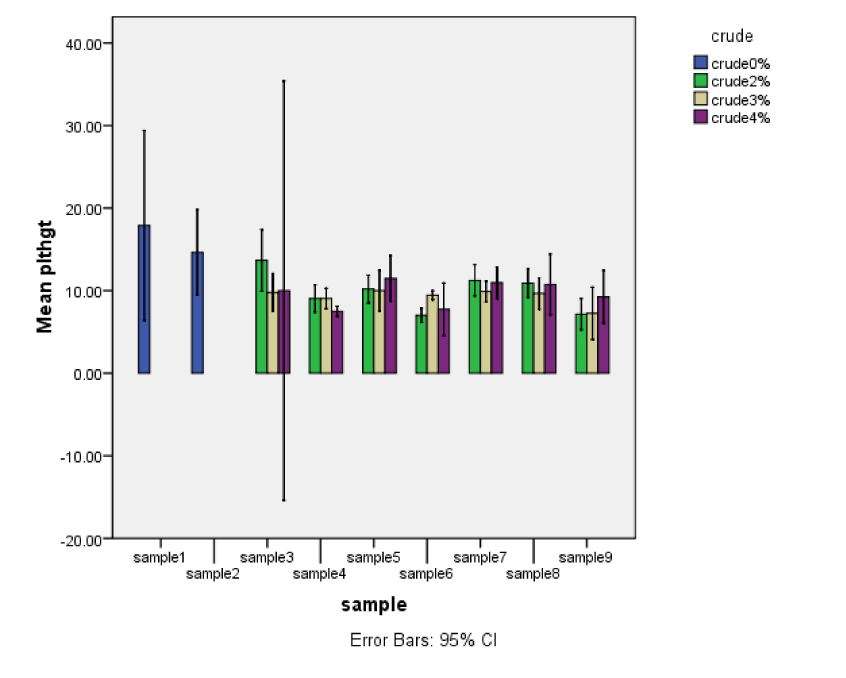 |
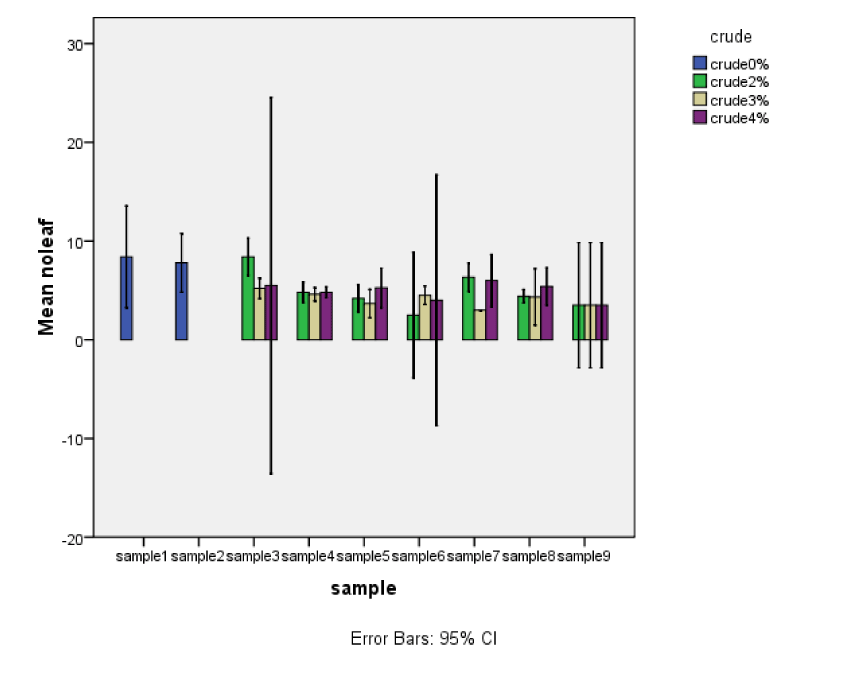 |
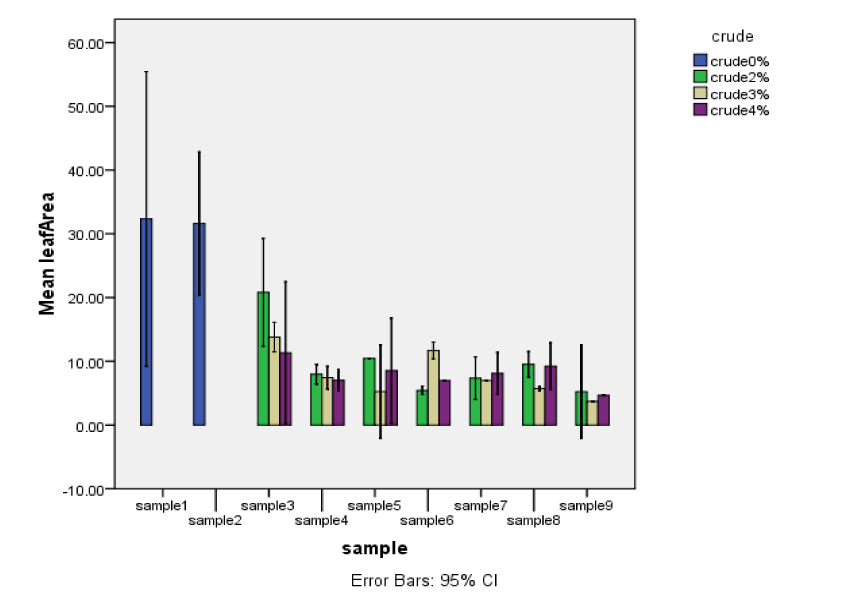 |
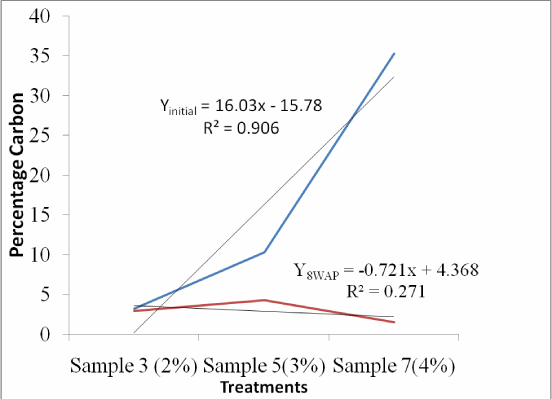 |
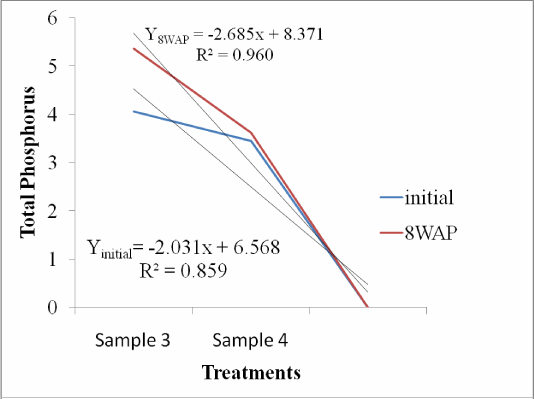 |
| Figure 1 | Figure 2 | Figure 3 | Figure 4 | Figure 5 |
Relevant Topics
- Anaerobic Biodegradation
- Biodegradable Balloons
- Biodegradable Confetti
- Biodegradable Diapers
- Biodegradable Plastics
- Biodegradable Sunscreen
- Biodegradation
- Bioremediation Bacteria
- Bioremediation Oil Spills
- Bioremediation Plants
- Bioremediation Products
- Ex Situ Bioremediation
- Heavy Metal Bioremediation
- In Situ Bioremediation
- Mycoremediation
- Non Biodegradable
- Phytoremediation
- Sewage Water Treatment
- Soil Bioremediation
- Types of Upwelling
- Waste Degredation
- Xenobiotics
Recommended Journals
Article Tools
Article Usage
- Total views: 18332
- [From(publication date):
December-2010 - Nov 25, 2025] - Breakdown by view type
- HTML page views : 13207
- PDF downloads : 5125
